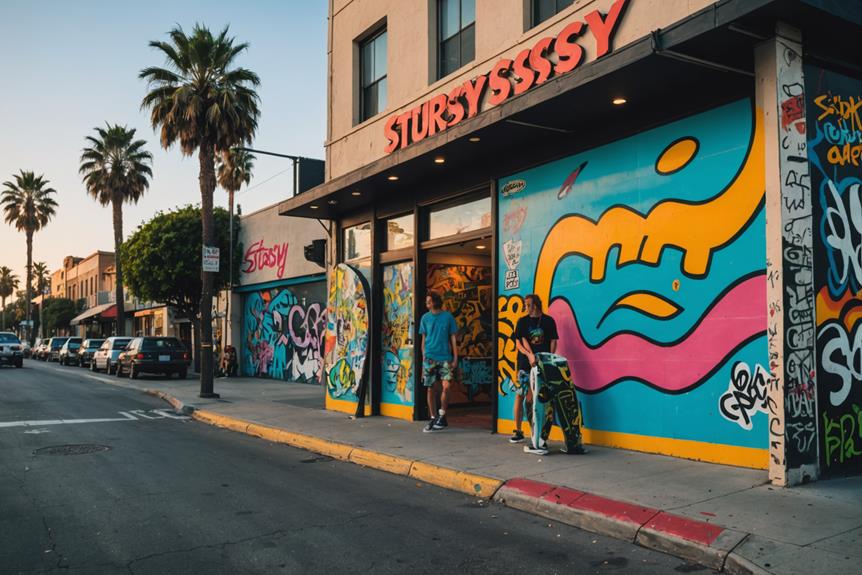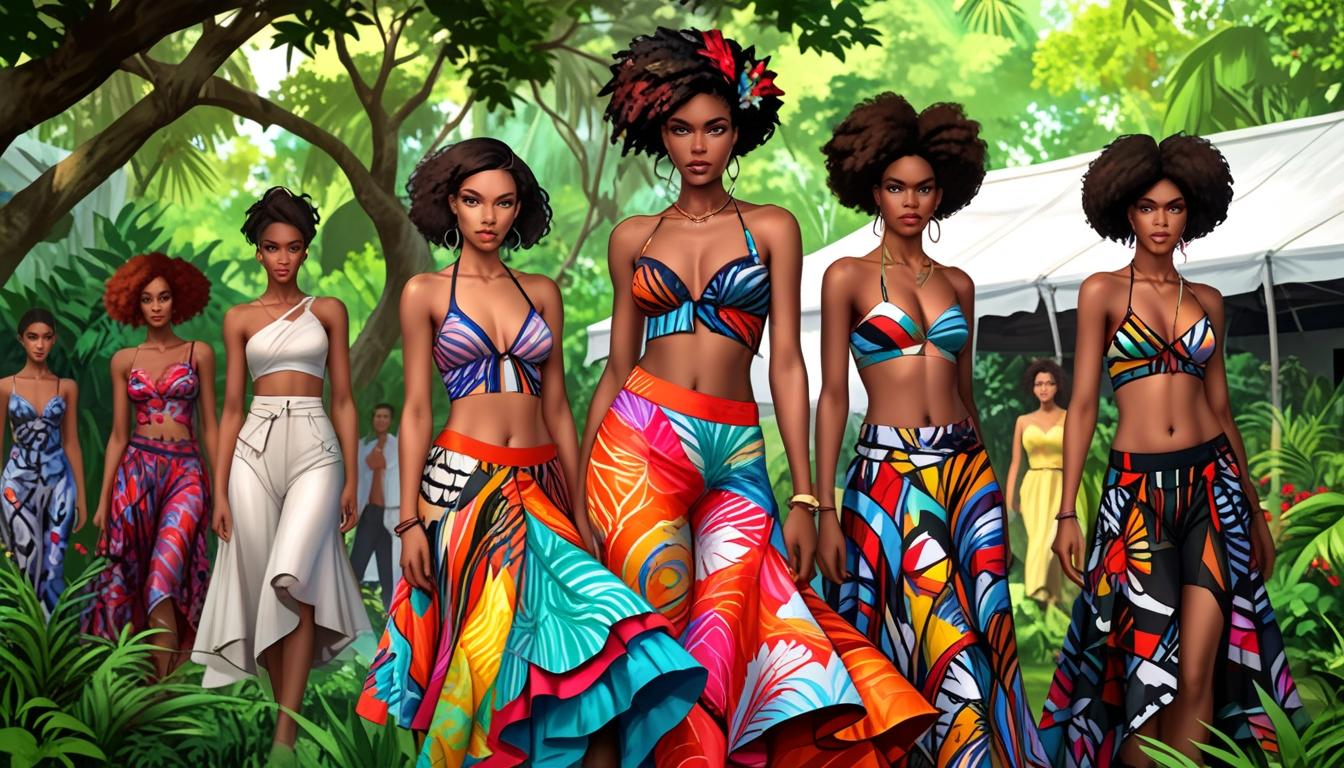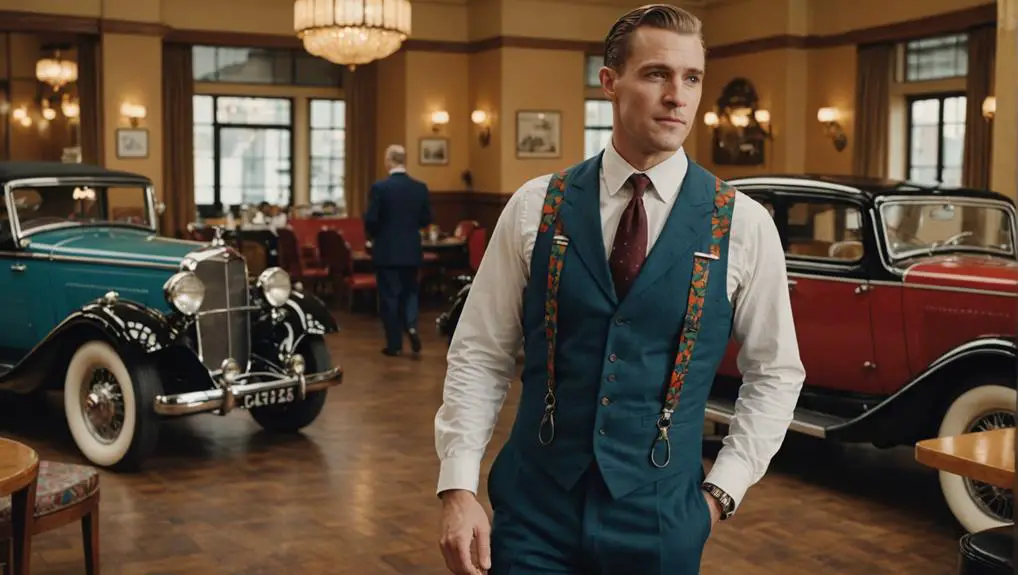Stussy was founded in 1980 by Shawn Stussy in Laguna Beach, California. He started with surfboards, creating unique designs and a signature logo that captured the essence of surf culture. In 1982, his artistic approach expanded into apparel, selling thousands of T-shirts at trade shows unexpectedly. Shawn's surf shop, opened in 1979, helped connect directly with customers and showcase his designs. Stussy evolved into a cultural phenomenon, blending reggae, punk, and graffiti influences. As the brand grew, it created a community around the International Stüssy Tribe, marking its impact on streetwear and youth culture. You might be curious about its journey!
Origins of Stussy

Stussy's origins trace back to 1980 when Shawn Stussy launched the brand in Laguna Beach, California. Initially, Shawn focused on creating surfboards, tapping into the vibrant surf culture that defined the region. His unique approach combined his passion for surfing with an artistic flair, leading him to scrawl his signature on the boards. This logo would later evolve into a symbol of the brand's identity, becoming a recognizable feature on Stussy apparel.
As demand grew, Shawn realized there was a market for more than just surfboards. He made his first foray into apparel sales at trade shows, where he sold a remarkable 1,000 t-shirts. These shirts weren't initially intended for sale, but the overwhelming response highlighted the potential of the brand and its connection to the surfing community.
The establishment of a surf shop in 1979 laid the groundwork for Stussy's retail presence, enhancing its visibility and brand recognition.
Stussy's aesthetic drew heavily from California's artistic styles, merging influences from reggae, punk, and graffiti. This eclectic mix helped shape its identity and set it apart from other brands. By combining quality surf gear with a distinct artistic vision, Shawn Stussy not only captured the essence of the surf culture but also created a brand that resonates with people beyond the waves.
As Stussy evolved, it became a staple in the world of streetwear, showcasing the seamless blend of lifestyle and creativity that continues to inspire today.
Early Branding Strategies
While the brand's roots lie in surf culture, its early branding strategies played an essential role in shaping Stussy's identity and reaching a broader audience. Founded in 1980 by Shawn Stussy, the brand began with surfboards, where he incorporated unique graphics that laid the groundwork for what would become a recognizable aesthetic. Shawn's signature evolved into the brand's iconic logo, which quickly became a symbol of coolness and authenticity. This transformation marked the beginning of Stussy's journey from surfboards to a prominent clothing brand, reflecting the shift in consumer interests towards apparel the change to clothing.
In 1982, Stussy took a bold step by screen-printing his logo on T-shirts. This move led to unexpected sales success, with 1,000 shirts flying off the shelves at trade shows—even though they were never intended for sale!
The opening of a surf shop in Laguna Beach in 1979 marked a pivotal moment for early branding, allowing Stussy to connect directly with customers and showcase his apparel.
Emphasizing grassroots marketing, Shawn fostered a sense of community that would become a hallmark of the brand. The formation of the International Stussy Tribe in the late 1980s brought wearers together, creating an exclusive club around the brand.
This sense of belonging not only solidified loyalty among fans but also extended Stussy's reach beyond surf culture, appealing to a wider audience. Stussy's early branding strategies didn't just sell clothes—they built a lifestyle and a vibrant community that continues to thrive today.
Growth and Expansion
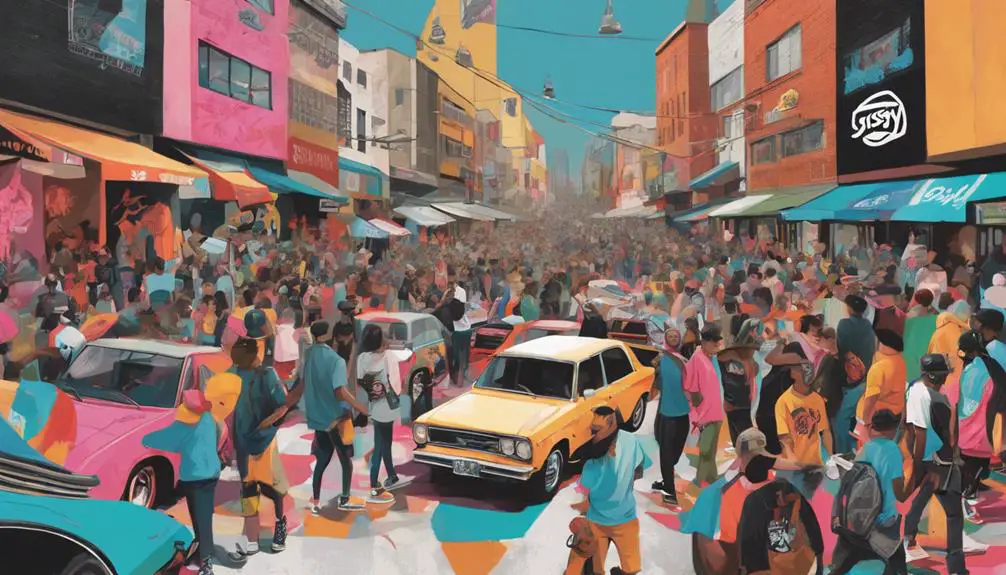
Building on its strong grassroots foundation, Stussy quickly expanded its reach and influence in the fashion world. The launch of its apparel line in 1984, in partnership with Frank Sinatra Jr., marked a significant turning point. This collaboration allowed Stussy to grow beyond just surfboards, making waves in the streetwear scene. By 1990, the brand was generating an impressive annual turnover of $17 million, showcasing its rapid expansion and popularity.
In 1988, Stussy took its first steps into international markets, establishing a presence in Europe and opening a boutique in SoHo, NYC. This move not only broadened its audience but also solidified its status as a global streetwear icon. The opening of a flagship store in New York City in 1991 was another vital moment, as it placed Stussy in the heart of one of the world's major urban fashion hubs.
Collaborations played an essential role in Stussy's growth. Notable partnerships, like the one with Nike in 2001, highlighted the brand's innovative spirit and ability to stay ahead of trends. These collaborations further cemented Stussy's reputation as a key player in the streetwear market, attracting a diverse range of customers.
Through strategic growth and expansion, Stussy not only carved out a unique space for itself in fashion history but also set the stage for future generations of streetwear enthusiasts to follow.
Cultural Impact and Community
How did Stussy manage to cultivate such a devoted community? It all started with the emergence of the International Stüssy Tribe (IST) in the late 1980s. This group created a sense of belonging and exclusivity, drawing in brand enthusiasts who felt connected to something bigger.
Stussy's grassroots marketing campaigns, showcased in cult publications like The Face and Thrasher, emphasized authenticity. These campaigns resonated deeply with urban youth culture, making the brand a staple in streetwear. The brand's history and evolution played a significant role in fostering this community, as it shifted from surfboards to apparel, drawing in diverse cultural influences vintage identification resources.
One of the standout features of the IST was the introduction of custom varsity jackets. These jackets became symbols of membership, reinforcing community identity and loyalty. By wearing them, you weren't just showing off a brand; you were showcasing your connection to a movement.
Collaborations with influential creatives like Luca Benini and Hiroshi Fujiwara helped shape Stussy's image, linking it to various cultural movements and maintaining its relevance.
Through shared values and cultural significance, Stussy cultivated a dedicated following that transcended mere fashion. You weren't just a customer; you became part of the streetwear community, where authenticity mattered.
This connection fostered an environment where people felt they belonged, solidifying Stussy's position as a key player in the industry. The brand's ability to evolve while staying true to its roots has guaranteed that it remains a beloved fixture in urban youth culture, capturing the spirit of a generation while inspiring future ones.
Key Collaborations and Milestones
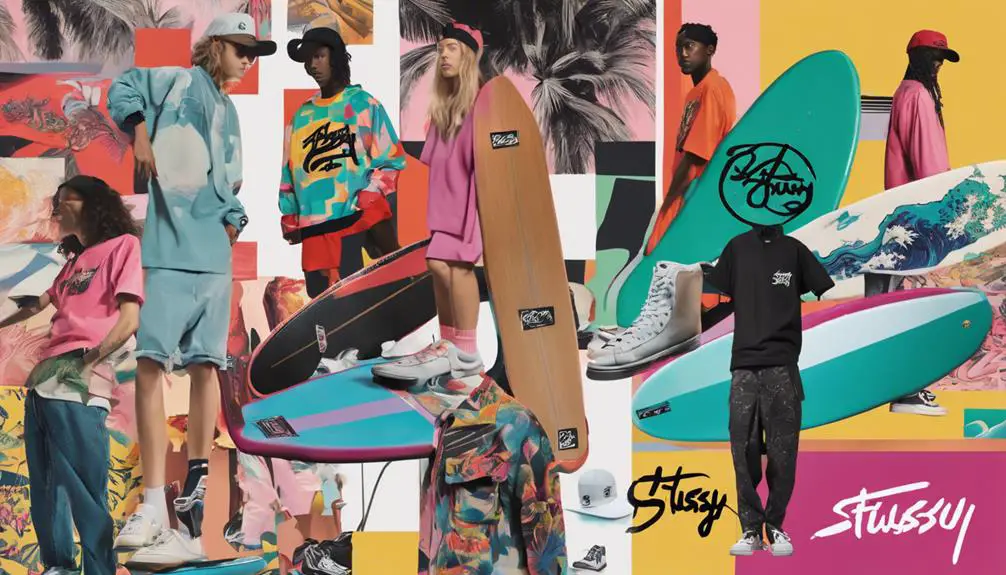
Stussy's journey through the fashion landscape is marked by key collaborations and milestones that have solidified its status as a streetwear icon. It all started in 1984 when Stussy partnered with Frank Sinatra Jr. to launch a new apparel line, markedly expanding its brand presence in the fashion world. This collaboration set the stage for future partnerships that would elevate Stussy's reputation.
In 1997, Stussy made waves with its first collaboration on the G-SHOCK DW-6900 watch. This marked the beginning of Stussy's ventures into unique product partnerships, blending streetwear with functional style.
Then, in 2001, Stussy teamed up with Nike to release the Dunk sneaker. This limited-edition drop sold out its supply of 3,000-5,000 pairs in just two days, showcasing the brand's ability to generate excitement without online sales.
Fast forward to 2010, when Stussy celebrated its influential position in streetwear with an anniversary collection featuring collaborations with notable brands like Supreme and NEIGHBORHOOD. This collection highlighted how Stussy remained at the forefront of the streetwear movement.
